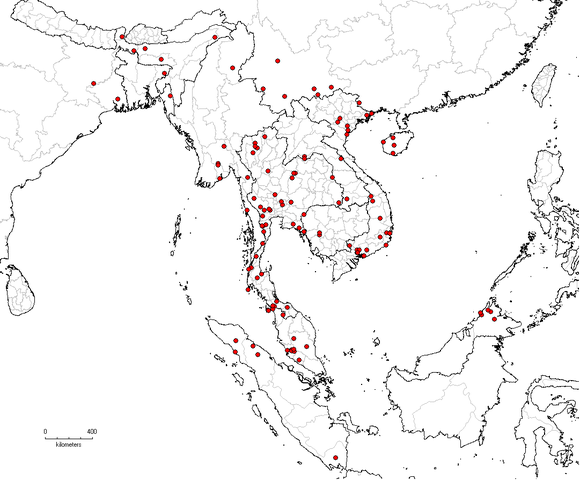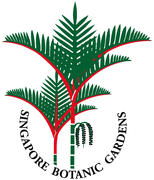Nomenclature
Argyreia capitiformis (Poir.) Ooststr., Fl.Males. I, 6: 941. 1972; R.C. Fang & Staples in C.Y. Wu & P.H. Raven,Fl. China 16: 317. 1995; Mill, Fl. Bhutan 7(2): 843. 1999.
Convolvulus capitiformis Poir. in Lam., Encycl. Suppl. 3: 469. 1814.
Lettsomia capitiformis (Poir.) Kerr, Fl. Siam. 3(2): 30. 1954.
Convolvulus capitatus Vahl, Symb. Bot. 3: 28. 1794, nomen illegit. non Desv. (1792) nec Cav. (1793).
Ipomoea capitata (Vahl) Roem. & Schult., Syst. Veg. 4: 238. 1819.
Argyreia capitata (Vahl) Choisy, Mém. Soc. Phys. Genève 6: 423. 1834.
Lettsomia capitata (Vahl) Miq., Fl. Ned. Ind. 2: 591. 1856.
Lettsomia strigosa Roxb., Fl. Ind. 2: 80. 1824.
Lettsomia peguensis C.B.Clarke in Hook.f., Fl. Brit. Ind. 4: 193. 1883.
Biogeography, Ecology and Natural History

NE India, Bhutan, Myanmar, China, Thailand, Laos, Cambodia, Vietnam, Malaysia, Indonesia. Type specimen from the “East Indies.”
Dry evergreen forest, degraded hardwood forest, along trails and
roads, margins of cultivated land, thickets, secondary vegetation, on diverse
soils and substrates; altitude: 50–1400 m.
Flowering: January, October–December; fruiting: March.
Staples, G. & P. Traiperm. 2010. Argyreia in Convolvulaceae. Fl. Thailand 10(3): 337–371.
Other information
Argyreia capitiformis thrives in disturbed habitats and has no doubt benefited from human activity that has opened open native forests for agriculture and development.
Two distinct phenotypes are observed in Thai specimens: one has capitate heads with tightly overlapping bracts and an indumentum that is dense and velvety; the other has more open cymose inflorescences and the indumentum is coarser, the trichomes longer and erect-patent. These need to be investigated to see how they fit into the taxonomically confused complex group of species that includes A. capitiformis.
Authorship for webpage


Add new comment